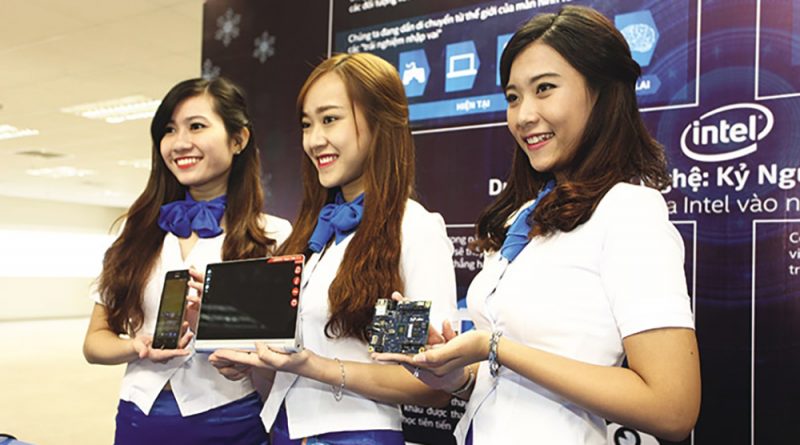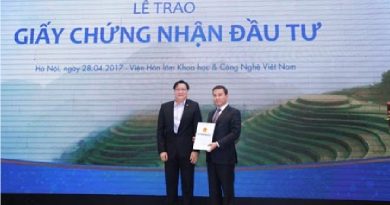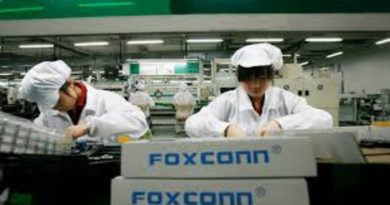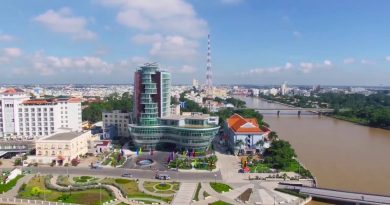Fresh investment model drives FDI
Vietnam has seen a new trend in foreign capital inflows focusing on new economic models in anticipation of the country’s innovation policy, contributing increasingly to the rise of local businesses in the digital age. Bich Thuy reports.
Last week, RION Co., Ltd – a Japanese manufacturer of commercial products based on science and technology – joined a conference held by Vietnam’s Ministry of Transport and the Japan International Cooperation Agency to seek opportunities to provide sound and vibration measuring instruments to Vietnamese airports.
“We have recently worked with the Civil Aviation Administration of Vietnam on plans and will begin installing the instruments at Noi Bai International Airport first early next year and then at Tan Son Nhat International Airport, and then Long Thanh International Airport. We are also targeting the eastern cluster of the North-South Expressway project,” Ken-ichi Simizu, CEO of RION, told VIR.
Operating in Vietnam since 2015, RION has so far worked with Bach Mai Hospital to provide medical equipment. Now it is planning to boost its footprint in the country by working with Hue Hospital and others in Ho Chi Minh City, and venture further into aviation and road infrastructure projects.
New economy model
RION is an example of new movements among foreign enterprises in Vietnam. According to Nguyen Mai, chairman of the Vietnam Association of Foreign-Invested Enterprises, there emerged a new trend of foreign investment inflows into Vietnam called the New Economy Model (NEM), meaning cross-border investment without capital contribution to Vietnamese partners.
“Unlike in previous years, when foreign direct investment (FDI) was the only channel, besides mergers and acquisitions, NEM has emerged in 2017 in line with the country’s innovation strategy and the development of domestic enterprises,” Mai told VIR.
Vietnam is quickly drafting its national strategy to catch up with the Fourth Industrial Revolution and the rapid development of new technologies, driven by its vision of stimulating inclusive socio-economic development through science and technology. Therefore, the country is definitely looking for partners who have strong expertise in technology development and innovation.
Meanwhile, cities and provinces in Vietnam are developing plans to become smart cities, thus bringing in huge opportunities for multinational corporations (MNCs).
Seeing the potential, other leading technology groups from Sweden and other countries are venturing further into Vietnam, with Ericsson, Siemens, ABB, Volvo Buses, Roxtec, and Axis being the most prominent names.
Ericsson signed a memorandum of understanding (MoU) with the Ministry of Science and Technology to establish an Internet of Things (IoT) innovation hub in Hanoi in the first half of 2019.
“Ericsson is investing in the nation’s future, leveraging ICT as the engine of growth and prosperity, and we are committed to continuing to invest for the next 25 years and beyond,” said Denis Brunetti, president of Ericsson Vietnam, Myanmar, Cambodia and Laos.
Ericsson has been in Vietnam for 25 years, investing in science and technology innovation, and then fostering technology innovation by co-operating with Vietnamese ministries, agencies, and local enterprises. The Swedish firm has been co-operating with a number of telecoms and technology giants such as Viettel, MobiFone, and VNPT. This MoU is aimed to foster startup innovation.
Recently, ABB showcased its latest IoT technologies built on the ABB Ability platform, including a demo of its smart factory in the northern province of Bac Ninh, ABB Ability Smart Sensor, and ABB Ability Data Center Automation virtual reality exploration. The company has been co-operating with Vietnam’s leading private conglomerate Vingroup, cement producer The Vissai, and many others to promote its technology innovations and achieved success so far in Vietnam.
Also, Germany’s Siemens has agreed to provide digital solutions across the entire automotive OEM value chain for VinFast to realise Vingroup’s Made-in-Vietnam car manufacturing dream. Besides Vingroup, Siemens is partnering with many other Vietnamese corporations, ministries, and agencies and is seeking for even more.
Many others from Japan, South Korea, the US, and EU are also studying co-operation opportunities in the transport sector in Hanoi, Ho Chi Minh City, and Danang, which already have smart city development plans.
Experts like Mai claimed NEM has increased the quality of FDI in the country by strengthening domestic enterprises, thus improving the competitiveness of the economy as a whole.
New trend, new strength
Looking at the performance of Vingroup, the significance of NEM is apparent. As a multi-sector group focusing on healthcare, pharmaceuticals, property, education, high-tech agriculture, and retail, the group is growing at a tremendous pace, and has become a national brand shouldering the nation’s dreams.
It established VinFast in 2017 and has been co-operating with Siemens and others from Germany, Italy, and the US to manufacture engines, designs, and other parts for its cars and motorbikes. Vingroup also recruited famous talents from leading MNCs like Vo Quang Hue of Germany’s Bosch who helps boost links with Germany and other MNCs.
Vingroup’s plan has attracted strong interest from MNCs. Though they have yet to invest directly in Vietnam, they transfer technology, share experience and business governance, nurturing this dream.
Twenty years after Vietnam granted the first investment licence to an automobile joint venture – Toyota Vietnam, Vietnam-based automakers have yet to create a truly Vietnamese car, and have been sticking to assembly at a relatively high cost compared to competitors like Thailand and Malaysia.
“It is too early to confirm whether the plan will succeed, but it has so far made a big bang with the ‘A Star is Born’ award from AUTOBEST and the thousands of registered buyers. This reflects the growing strength of this Vietnamese conglomerate,” Mai noted.
A few days ago, Vingroup received approval for its investment plan in a smart electronics manufacturing plant worth nearly VND1.2 trillion ($52.17 million) in Hanoi’s Hoa Lac High-Tech Park. To be completed in the second quarter of 2019, the project will create a brand of smart electronics on par with international standards. With the
target on research and development, as well as software and high-tech industrial production, more MNCs are seeking co-operation with Vingroup.
Deo Ca Investment JSC and gigantic telecom group Viettel and many others are also examples of Vietnamese companies benefiting from NEM.
Transport projects have often been blamed for sluggish development, thus increasing total investment costs. However, Deo Ca’s projects have always been completed on schedule, thanks to improved business governance and advanced technologies.
Deo Ca has been co-operating with German and US investors in technology and human resources training, thanks to which the company is said to now hold the world’s most advanced technologies in tunnel dredging and construction.
The company is the investor and operator of Deo Ca Tunnel in Central Vietnam, one of the country’s key infrastructure projects put into operation in August 2017, right on schedule, as well as Cu Mong Tunnel, which is expected to come online in early 2019 also in the central region.
In a similar vein, Viettel, in co-operation with Ericsson, has just announced providing 5G services by 2019 and making 5G available nationwide by 2020. Viettel is now present in more than 10 countries and is one of the world’s biggest telecoms service providers with 240 million subscribers – and dreams of expansion in the months to come.
The facts prove that NEM has not only contributed to the growth of domestic companies but also changed the FDI landscape across several sectors. Foreign investors now tend to seek co-operation with powerful Vietnamese counterparts to jointly develop projects.
In addition, in Fourth Industrial Revolution era, experts forecast the new FDI trend for Vietnam to turn the black spot of technology transfer into a bright spot in the FDI picture.
The new FDI trend is also hoped to ease worries about a fall in the country’s FDI attraction so far this year, and promises better quality and stronger inflows in the future.
According to the Ministry of Planning and Investment, in the first 11 months of 2018, foreign investors pledged $30.8 billion in investment, down 6.8 per cent on-year.
Japan, South Korea, and Singapore remain the country’s three biggest foreign investors, while processing and manufacturing, realty, and retail receive the most attention.
During the period, FDI disbursement is estimated at $16.5 billion, up 3.1 per cent on-year.
“It is expected that FDI disbursement will make up 23 per cent of total public investment this year. It is a reasonable ratio amidst the growing strength of domestic companies,” Mai noted.
Source: vir.com.vn







